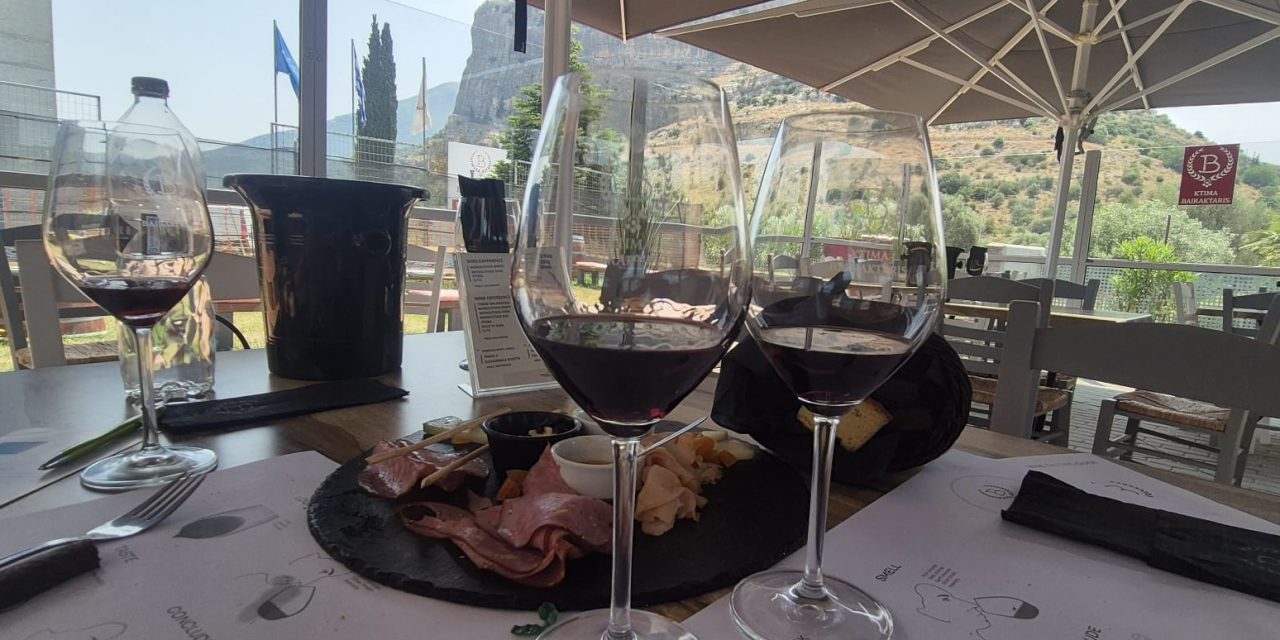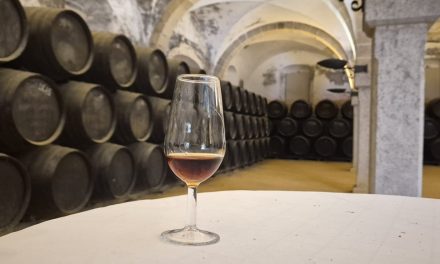A journey through vineyards, ancient legends, and the soulful wines of Nemea and Monemvasia
ATHENS – This past June, I embarked on a journey through the heart of the Peloponnese, a region in southern Greece where time-honored traditions meet breathtaking landscapes — and where wine is not merely a drink, but a story passed from generation to generation. My trip focused on two distinct yet equally enchanting wine regions: Nemea and Monemvasia. Along the way, I discovered not just extraordinary wines, but also the soul of a land shaped by myth, sun, and sea.
Nemea: The Kingdom of Agiorgitiko
Set among rolling hills and bathed in golden sunlight, Nemea is the beating heart of red wine production in Greece. Known as the “Bordeaux of Greece,” it is home to the Agiorgitiko grape — a noble variety as ancient as the legends of Hercules himself, who is said to have slain the Nemean lion nearby.
The landscape here is lush and inviting, with cypress trees piercing the skyline and vineyards stretching as far as the eye can see. The altitude, soil composition, and Mediterranean climate all contribute to the unique character of Agiorgitiko, a grape that produces wines of deep ruby color, soft tannins, and a seductive blend of red fruit, spice, and earthiness.
Ktima Bairaktaris: Modern Spirit, Ancient Soil
In the heart of this winemaking paradise lies Ktima Bairaktaris, a family-run winery that blends tradition with innovation. The estate’s modern, welcoming tasting room contrasts beautifully with the rustic charm of the surrounding vineyards.
The Bairaktaris family has cultivated their vines for generations, and their deep respect for the land is reflected in every bottle. Their Agiorgitiko wines range from fresh, fruity expressions ideal for everyday enjoyment to more complex, oak-aged versions that invite contemplation. I particularly enjoyed their Nemea Reserve, a structured yet elegant red with notes of black cherry, clove, and dried herbs — a wine that tells the story of Nemea with each sip.
Equally captivating was their white blend of Moschofilero and Roditis, a crisp, aromatic wine that brought to mind the citrus groves and wild herbs dotting the Peloponnesian countryside.
Monemvasia: Where History Meets the Sea
From the vineyards of Nemea, I traveled south to the storied coastline of Laconia, where the medieval fortress town of Monemvasia rises like a stone mirage from the Aegean Sea. Known as the “Gibraltar of the East,” this rocky island has seen Byzantines, Venetians, and Ottomans pass through its gates — and through it all, vines have grown, quietly preserving an ancient legacy.
It was here, centuries ago, that the famed Malvasia wine was born. Once exported across Europe and coveted by kings and emperors, Malvasia nearly disappeared — until a local family decided to bring it back.
Tsimbidi Monemvasia Winery: Reviving a Legend
The Tsimbidi family has become synonymous with the rebirth of Malvasia in its homeland. Their winery, perched near the coast with sweeping views of the sea and fortress, is as much a cultural revival project as it is a producer of fine wines.
I was lucky to sample their Malvasia di Monemvasia, a luscious, golden-hued wine made from sun-dried grapes and aged in oak. Sweet but perfectly balanced, it evokes apricots, honey, and the salty kiss of the nearby sea — a wine that lingers not just on the palate but in the memory.
Their dry whites, crafted from Monemvasia and Kidonitsa grapes, offered a completely different experience: bright, mineral, and expressive, with hints of pear, quince, and white flowers. The Kidonitsa, in particular, was a revelation — an indigenous variety almost lost to time, now given new life through careful cultivation and a winemaker’s vision.
Conclusion: A Journey Worth Bottling
My wine journey through the Peloponnese was far more than a tasting tour — it was an immersion into a living tapestry of history, geography, and human passion. From the mythic hills of Nemea to the ancient coast of Monemvasia, every glass told a story. And as I left with bottles clinking gently in my suitcase, I knew I was carrying more than wine — I was carrying the spirit of Greece itself.








